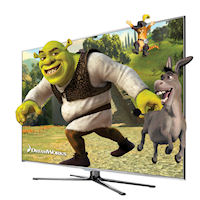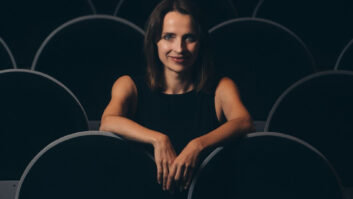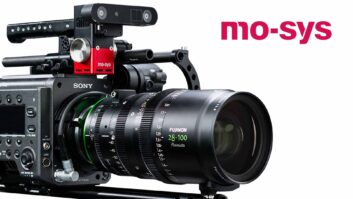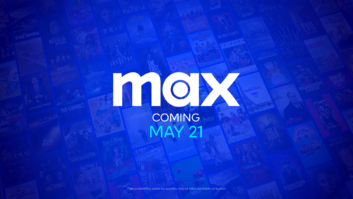
Within three years, close to half of all UK households will own a 3DTV set, according to new figures reported by Futuresource Consulting. The bad news is that most consumers will wind up owning a 3D set by default, and are sometimes even unaware at the time of purchase. Overall, the suite of predictions for the global 3DTV market from Futuresource Consulting will support those who believe that the most pertinent guide to the format’s success is that charted by HD. Worldwide, there are approximately 55 3D channels and demo channels and at least another 35 VoD (Video on demand) services offering 3D movie content. Futuresource Consulting’s Market Analyst, Fiona Hoy, expects that to rise by 15-20 channels and/or 3D VoD service launches in 2012. The leading market in terms of both 3DTV sales and household penetration is the US, where 3DTV penetration will reach 4% this year, with an installed base of over 4.5 million. This is a marked increase on 2010 where the installed base sat at around one million units. This installed base and percentage of 3D capable households will grow significantly over the next three to five years and by 2015 Futuresource expects close to half (47%) of US households will own a 3D TV. “Such trending is being echoed in the major markets across Europe although adoption has and is expected to lag marginally behind the US,” says Hoy. “If you look at the UK, approximately 800,000 (3%) of UK households will own a 3D TV by the end of this year and by 2015 a similar percentage of households to the US are expected to be 3D capable.” Many consumers purchase the 3D function by default, when replacing old TVs with mid- to high-end models, which often have 3D capability as a standard. “This is one of the key reasons behind the dramatic growth in 3D capable households by 2015,” Hoy stated. “Sometimes consumers are even unaware at the time of purchase.” That’s not much good to broadcasters like Sky which require 3DTV set owners to subscribe to their service. Factors encouraging growth in 3DTV set sales include the continued release of strong 3D titles such as The Lion King. There is a strong release slate for 2012 including a 3D release of Titanic along with increased availability of 3D Blu-ray titles. Advertising of 3D, particularly by leading pay-TV providers such as Sky, and the advertising and promotion of the Olympics 2012 and World Cup in 3D (2014), will provide further lift, noted the analyst. Additional boost will be provided by the falling price of 3DTVs. Tesco, for example, is running TV adverts offering a 42” Technika 3D TV, Philips BD Player and eight pairs of passive glasses for £499. Equally there are a number of factors holding back growth, notably the current cost of the active glasses needed for 3D viewing and poor consumer education of the format. “Many consumers are still struggling with the concept of Blu-ray,” said Hoy. Bad publicity in relation to comments made about how 3D can cause viewers headaches and dizziness is also a negative to 3DTV purchase. “Consumers are holding back investment in 3D, waiting for no-glasses technology to emerge,” added Hoy.
www.futursesource-consulting.com
Within three years, close to half of all UK households will own a 3DTV set, according to new figures reported by Futuresource Consulting. The bad news is that most consumers will wind up owning a 3D set by default, and are sometimes even unaware at the time of purchase. Overall, the suite of predictions for the global 3DTV market from Futuresource Consulting will support those who believe that the most pertinent guide to the format’s success is that charted by HD. Worldwide, there are approximately 55 3D channels and demo channels and at least another 35 VoD (Video on demand) services offering 3D movie content. Futuresource Consulting’s Market Analyst, Fiona Hoy, expects that to rise by 15-20 channels and/or 3D VoD service launches in 2012. The leading market in terms of both 3DTV sales and household penetration is the US, where 3DTV penetration will reach 4% this year, with an installed base of over 4.5 million. This is a marked increase on 2010 where the installed base sat at around one million units. This installed base and percentage of 3D capable households will grow significantly over the next three to five years and by 2015 Futuresource expects close to half (47%) of US households will own a 3D TV. “Such trending is being echoed in the major markets across Europe although adoption has and is expected to lag marginally behind the US,” says Hoy. “If you look at the UK, approximately 800,000 (3%) of UK households will own a 3D TV by the end of this year and by 2015 a similar percentage of households to the US are expected to be 3D capable.” Many consumers purchase the 3D function by default, when replacing old TVs with mid- to high-end models, which often have 3D capability as a standard. “This is one of the key reasons behind the dramatic growth in 3D capable households by 2015,” Hoy stated. “Sometimes consumers are even unaware at the time of purchase.” That’s not much good to broadcasters like Sky which require 3DTV set owners to subscribe to their service. Factors encouraging growth in 3DTV set sales include the continued release of strong 3D titles such as The Lion King. There is a strong release slate for 2012 including a 3D release of Titanic along with increased availability of 3D Blu-ray titles. Advertising of 3D, particularly by leading pay-TV providers such as Sky, and the advertising and promotion of the Olympics 2012 and World Cup in 3D (2014), will provide further lift, noted the analyst. Additional boost will be provided by the falling price of 3DTVs. Tesco, for example, is running TV adverts offering a 42” Technika 3D TV, Philips BD Player and eight pairs of passive glasses for £499. Equally there are a number of factors holding back growth, notably the current cost of the active glasses needed for 3D viewing and poor consumer education of the format. “Many consumers are still struggling with the concept of Blu-ray,” said Hoy. Bad publicity in relation to comments made about how 3D can cause viewers headaches and dizziness is also a negative to 3DTV purchase. “Consumers are holding back investment in 3D, waiting for no-glasses technology to emerge,” added Hoy.
www.futuresource-consulting.com







